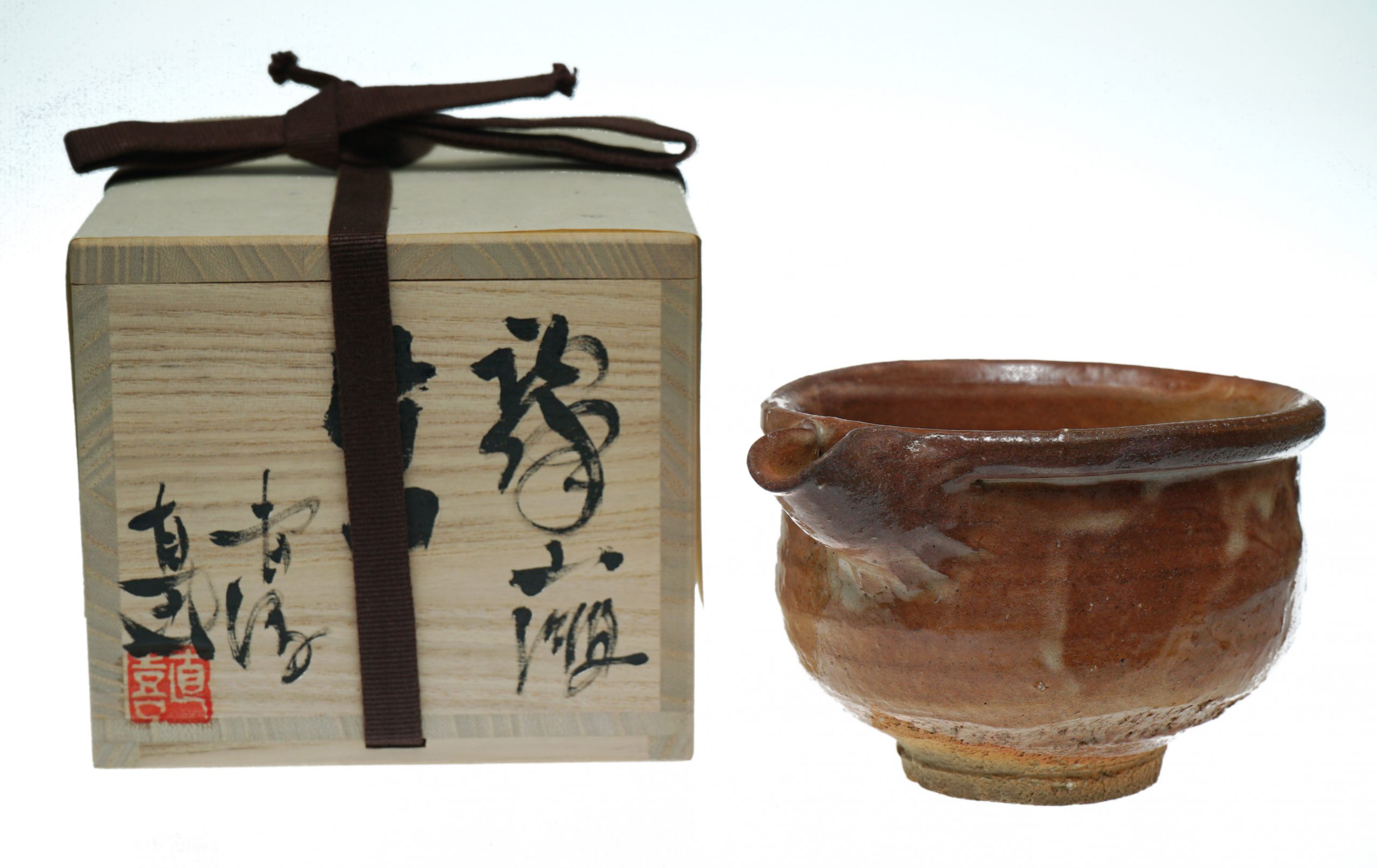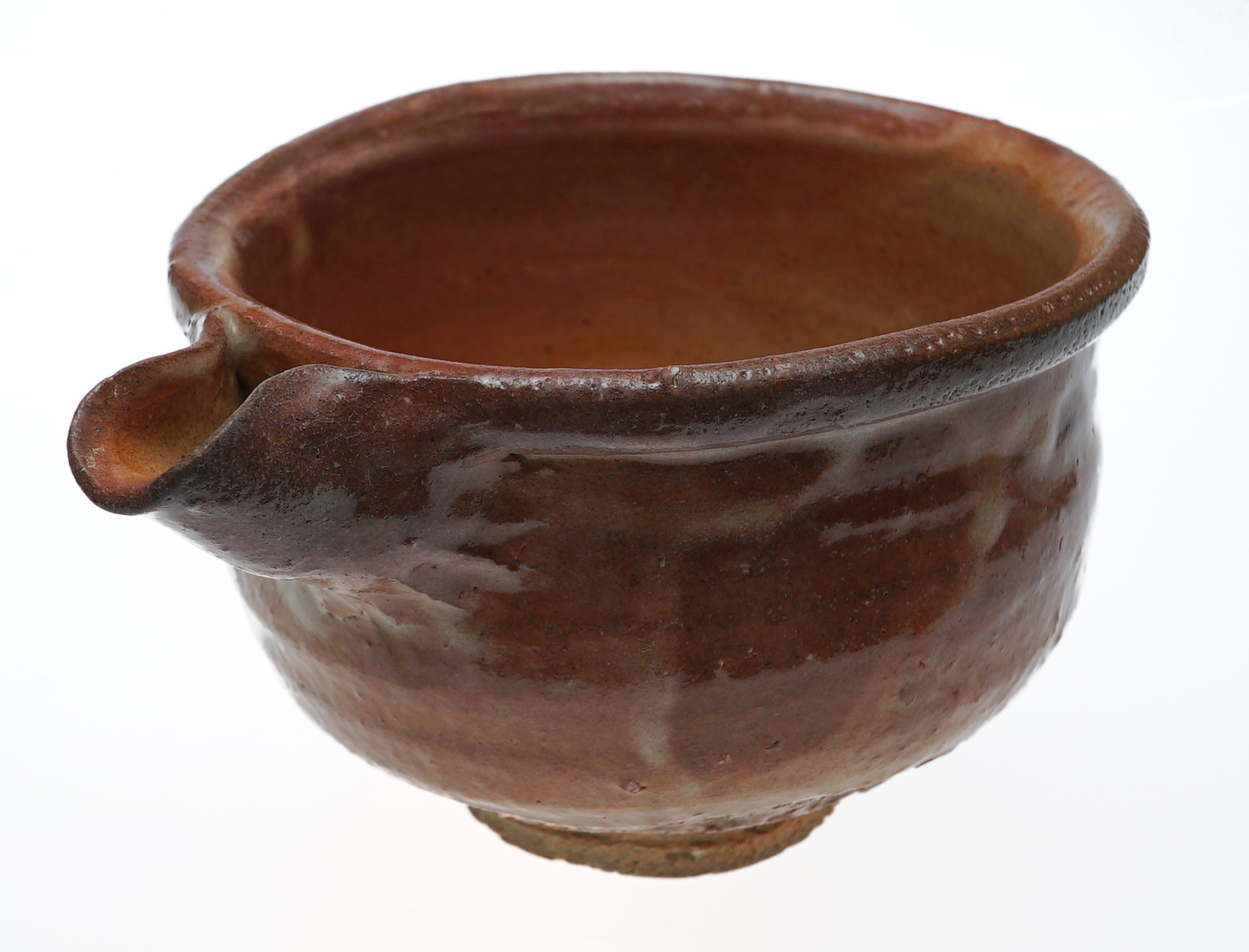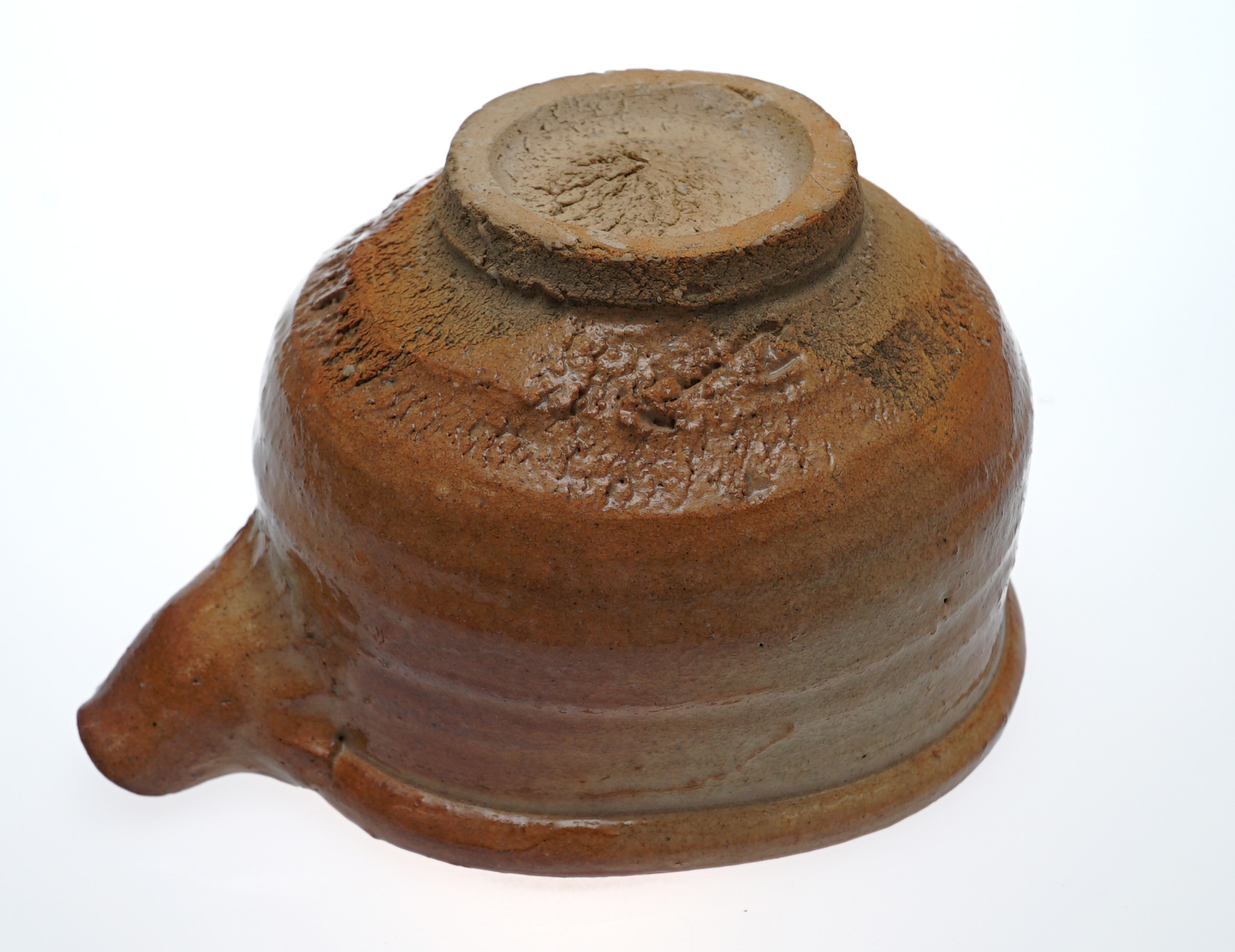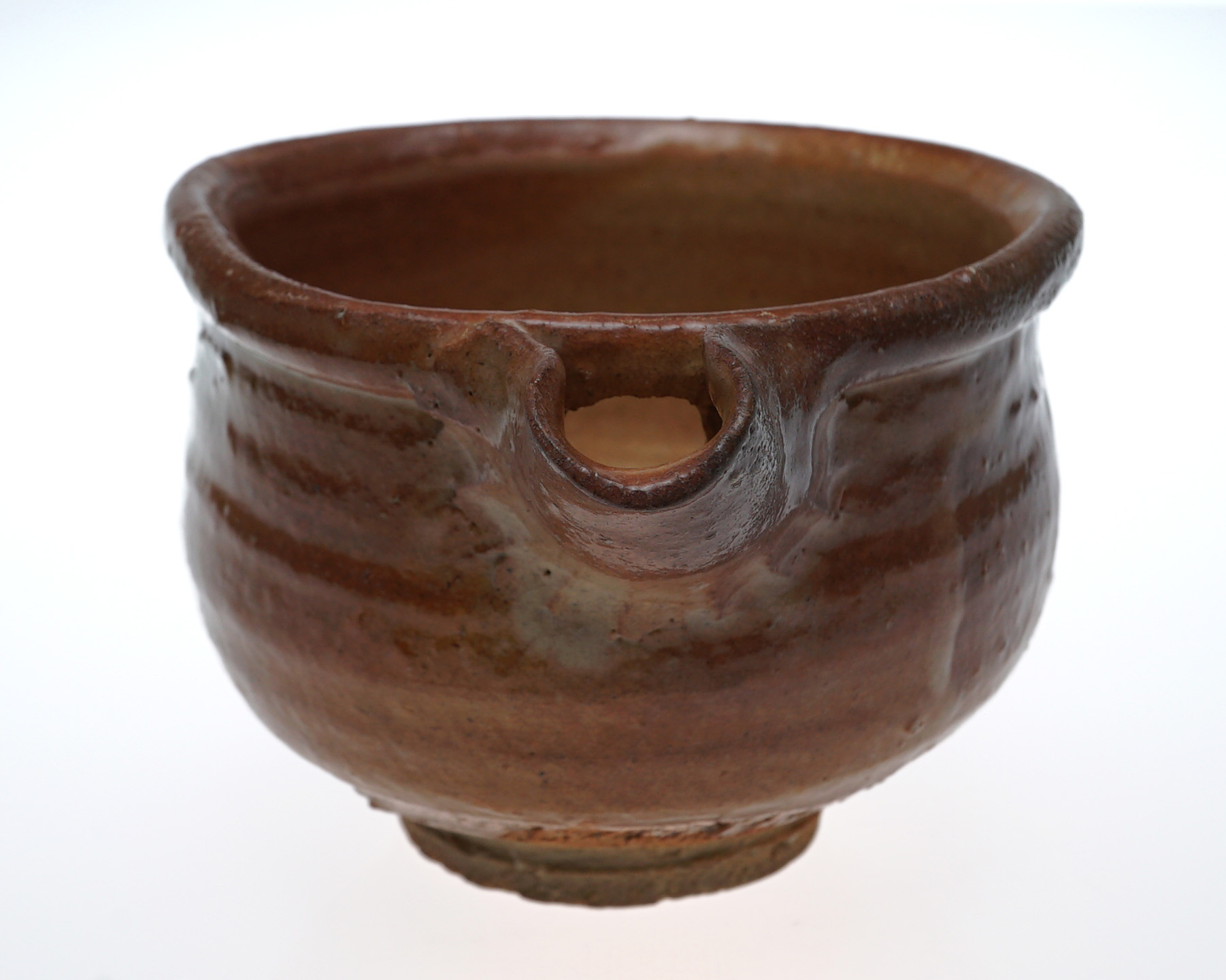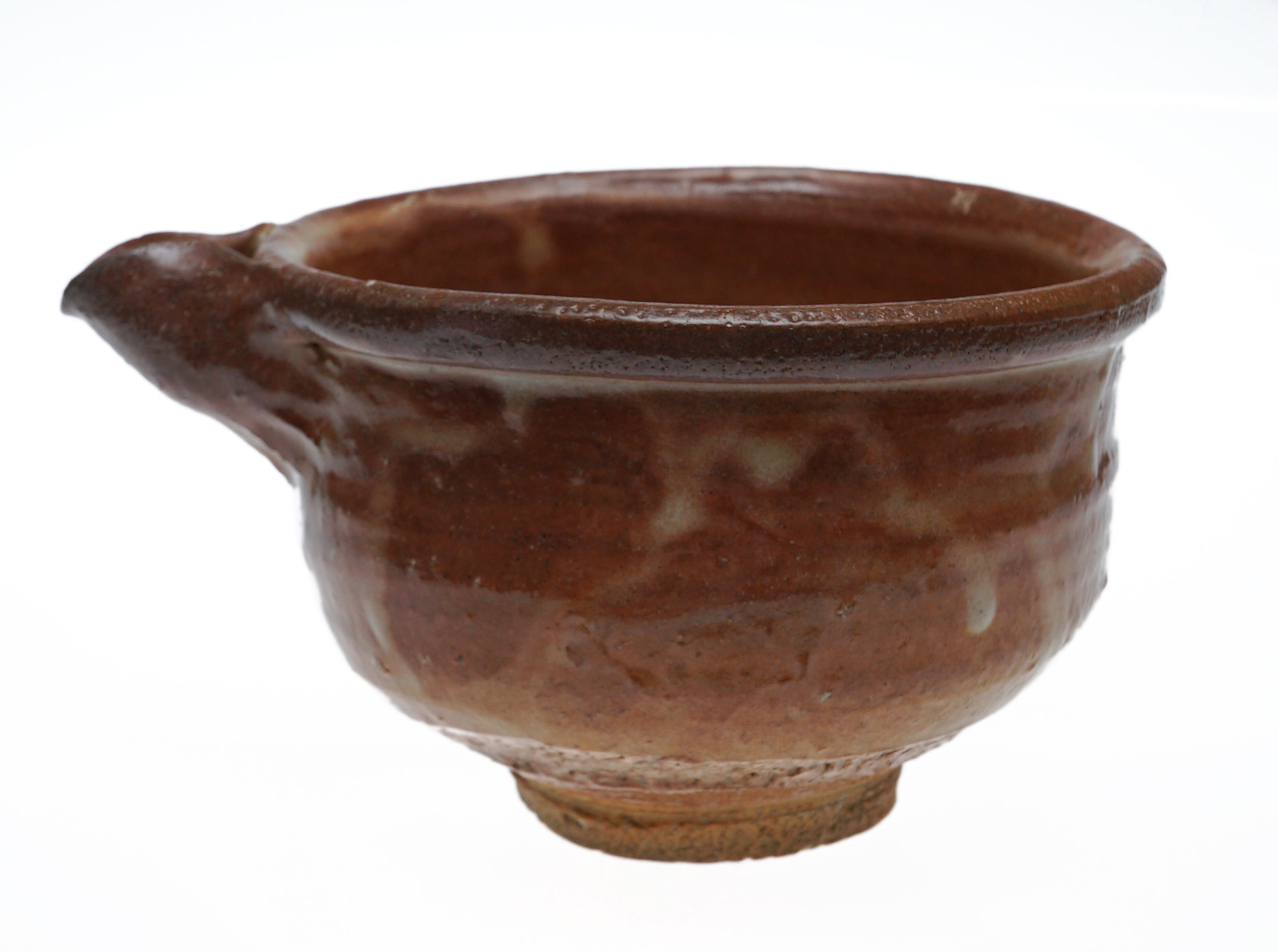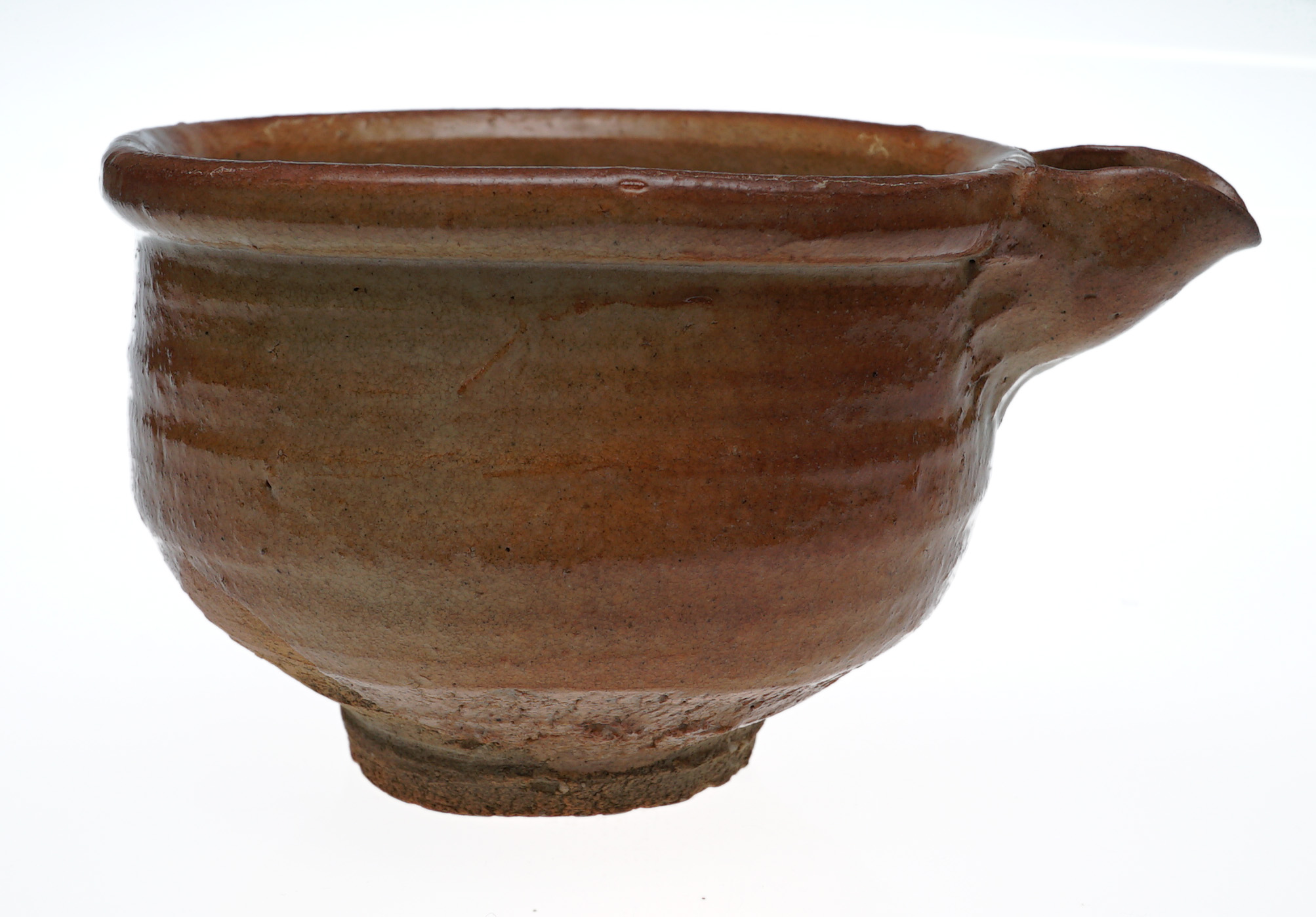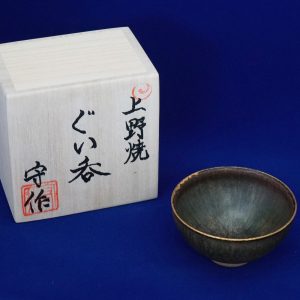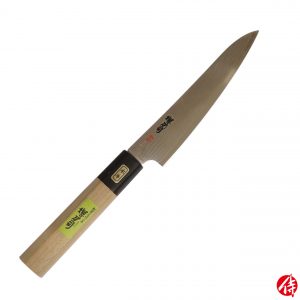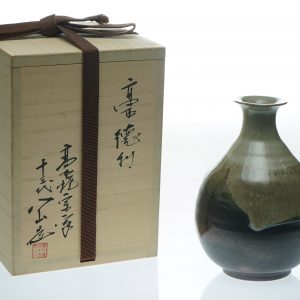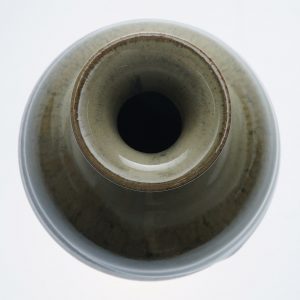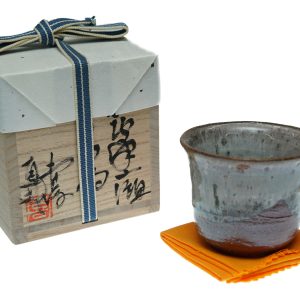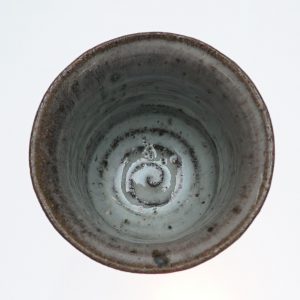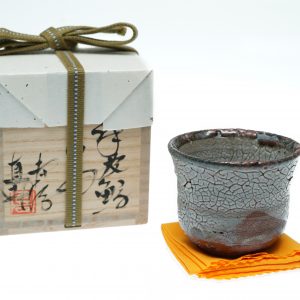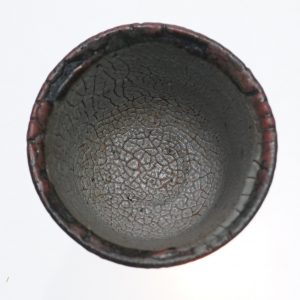Karatsu Yaki (Karatsu ware)
Place of production: Karatsu city, Saga Prefecture
The story: Kara-Tsu means “The port to Tang China dynasty”. The pottery production was introduced by potters from Tsushima Island and Iki island emigrated to this prefecture in the ancient ages. And, the more diverse styles of Karatsu-Yaki were produced after Korean potters introduced the technologies of a kiln, potter’s wheel, and glaze. A few examples are E-Karatsu, Chosen-Karatsu, Madara -Karatsu Mishima-Karatsu, Konabiki-Karatsu.
Karatsu-Yaki has been well- known for its familiar shape since the old age. Many tea connoisseurs were fond of this pottery so much that a proverb was made, which is “first-Raku, second-Hagi and Karatsu as a third”. Also, later the reputation of Karatsu-Yaki became nationwide to the point where it was mentioned as “the top of the west pottery is Karatsu while the top of east pottery is Seto, “.Karatsu-yaki, whose shape is simple yet relaxed, holds the new idea of pottery where a potter can freely paint flowers, fish, birds and so on. It also has the spirituality of wabi, which originates from its unique shape. Today, there are about 50 kilns in Karatsu city, where many potters try to develop new types pottery while keeping its traditional style throughout the flow of the times.
SOLD
$157.93
Made in Japan
Free Shipping Worldwide
Yamase is a name of place in Hamatama town. Using natural soil of Yamase.
SOLD
Related products
-
$245.62
Made in Japan
Free Shipping WorldwideMixture of black and white graze making us imagine vision of nature. The shape is typical Takatori-Yaki style.
-
$113.71
Made in Japan
Free Shipping WorldwideGlaze is made from glutinous rice straw. Yamase is a name of place in Hamatama town. Serving Sake inside make the cup more beautiful.
-
$113.71
Made in Japan
Free Shipping WorldwideKawakujira has a meaning for whale, outside of the cup as black skin of whale back, and white skin as belly. Traditional style of Karatsu Yaki. Looks simple but require highly skill of potter.
